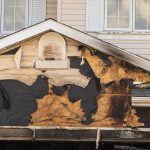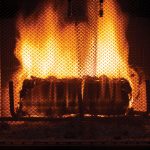Mold Growth After Water Damage: Strategies for Prevention and Remediation
Water damage can be caused by a variety of factors not limited to burst pipes, severe rainstorms, and floods. When it occurs, you’re left to deal with water damage restoration, as well as mold remediation services.
Mold remediation is necessary because mold spores can develop in as little as 24 hours after water damage. Worse is the fact that mold can survive – and thrive – on a multitude of common household surfaces such as wood, wallpaper, paint, carpet, and inside both ceiling and floor tiles. This ability to adapt to any environment is what makes mold growth after water damage so dangerous.
Fortunately, there are some strategies to both prevent and treat mold the next time your home experiences an unexpected leak.
4 Common Types of Mold Caused by Water Damage
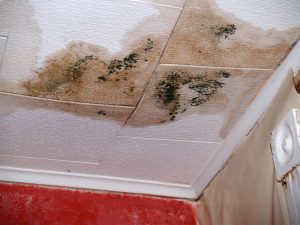 Before delving into these strategies for both prevention and remediation, it’s crucial to understand the types of molds resulting from water damage and understand their potential impacts on your family if left untreated.
Before delving into these strategies for both prevention and remediation, it’s crucial to understand the types of molds resulting from water damage and understand their potential impacts on your family if left untreated.
1. Aspergillus
Despite being one of the most common household molds to develop after water damage, it’s also one of the most dangerous because it’s hard to identify without industry expertise. This has to do with its unique coloring.
While most household molds are known for their black and green hues, Aspergillus has over 150 species that vary in color from black, white, yellow, gold, red, or brown. This inconsistency can make it hard to recognize, ensuring that it spreads to other areas of your house without your knowledge.
2. Stachybotrys
Have you ever heard the term Black Mold? If so, then you’re likely referring to a common household mold called Stachybotrys. Known for its black hue and slimy texture, Stachybotrys is usually found in areas with a high concentration of moisture and water damage, such as your bathroom.
This dangerous mold can produce mycotoxins, and with prolonged exposure can lead to serious health risks.
3. Cladosporium
Aside from breathing easier and preventing structural damage to your home, one of the main reasons why homeowners should treat mold as soon as possible is to prevent the onset of allergies. Of all the common molds caused by water damage, Cladosporium is known to cause the most severe allergic reactions.
Allergy sufferers may experience coughing, sneezing, postnasal drip, tightening of the chest, and, in severe cases, difficulty breathing. This household mold is recognizable by its black, gray, and green spots. If you see this and are experiencing any of the symptoms mentioned above, take it as a sign that you need mold remediation – and fast!
4. Ulocladium
Ulocladium is similar to Stachybotrys because it also presents as a black mold. It is commonly found in the bathroom and other rooms that have a high level of moisture and humidity. You might commonly find this mold around the base of your toilet. Its spores can embed themselves in papers and even dust!
Strategies for Mold Prevention
When dealing with water damage, mold can develop in as little as 24 hours. That’s why it’s critical to jump into action with prompt water damage response. In severe cases of water damage like floods, you may not be able to prevent mold; however, for minor cases of water damage, follow these steps to prevent mold growth.
Remove the Water
The first – and most important step – in the water restoration and subsequently, the mold prevention process, is to remove water. The sooner you get rid of it, the less likely mold will grow.
Of course, this may be easier said than done in cases of a flood, which would require a flood restoration professional, but smaller messes such as a water leak and burst pipe are easier to manage. Thoroughly dry the area with a towel or wet-dry vacuum until there’s no moisture left. To help dry the area faster, open windows and doors, and run a fan.
If your HVAC system was flooded with water, turn it off immediately to prevent spreading mold throughout the house.
Remove Damp and Waterlogged Items
As briefly mentioned above, mold spores can embed themselves in dust and fabric, but also survive on a multitude of surfaces, meaning that the sooner you remove waterlogged items from your home, the better chance you’ll have to isolate the mold outside. Think area rugs, wooden nightstands, books, and even a small armchair. All of these water-logged items offer an environment for Stachbotrys to grow on and in. This particular type of mold thrives on materials made with high cellulose content, such as paper, hemp, fabric, and clothes.
If you’re dealing with a minor leak, you may only have to remove one or two things. Getting them out can prevent further mold growth from spreading if any is currently present.
Clean and Disinfect the Area
Once you’ve thoroughly dried the affected room, clean and disinfect it. Usually, a bleach solution is used to clean walls, floors, and baseboards after water damage because it’s strong enough to kill both bacteria and fungi.
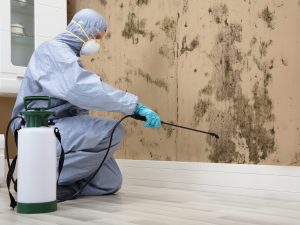
This means that if there are starter mold spores on these surfaces, the sodium hypochlorite present in bleach will be able to kill it.
Use a Dehumidifier
Regardless of the type of water leak or damage you’re dealing with, make sure to use a dehumidifier. This device is designed to capture excess moisture in the air that results from water damage.
This is an essential part of the mold remediation process because mold needs three things to survive: moisture, humidity, and a food source. If you eliminate one of its basic needs, it can’t survive.
Strategies for Mold Remediation
If your home has suffered from severe flooding, then you’re likely going to have to move forward with water damage restoration and mold remediation services. Here’s what you should expect from the mold remediation process:
Professional Assessment
Before the mold remediation process can begin, your technician will first need to conduct an assessment. This is done to not only determine what kind of mold they need to treat, but how major the contamination is.
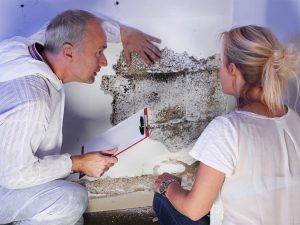
Doing so has several benefits, including helping your mold removal technician determine what tools they need to bring. The most common mold remediation equipment used includes air movers, air scrubbers, dehumidifiers, HEPA vacuums, and moisture meters.
Removal of Contaminated Materials
Following this assessment, the technician’s next step is to get everything with mold out of your home. As briefly mentioned above, this can help slow the spread of mold spores on other items in your home but also ensures the safe disposal of items that need to be replaced, like drywall and insulation.
Because of the health hazards associated with mold growth, you should refrain from touching these items yourself. Your mold remediation team will wear specialized personal protective gear and bags, and then dispose of mold-laden items according to both local and federal environmental standards.
The Area is Fully Dried
To prevent more mold from growing, the next step is to thoroughly dry out the space. As noted earlier, this is typically done with a dehumidifier, but it could also include an industrial fan. Regardless of the tools that are used, this is the most important part of the mold remediation process. Without it, mold spores can continue to grow and spread throughout your home and HVAC system.
Cleaning and Disinfection of the Affected Area
When the room is free and clear, the next step is to disinfect the area thoroughly. As mentioned above, there are several heavy-duty cleaners your technician will use to kill mold spores at the source.
During this phase, it’s common for tiny mold spores to disperse. That HEPA vacuum we mentioned above? It can trap these small moldy spores that a traditional vacuum can’t, which is why it’s an essential part of the mold remediation toolkit.
Choosing the Right Mold Remediation Company
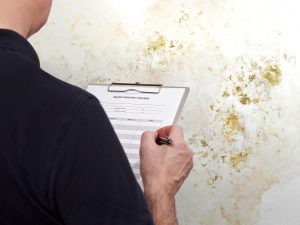 Choosing the right mold remediation company makes all the difference in treating mold, not just at a surface level, but getting rid of it for good.
Choosing the right mold remediation company makes all the difference in treating mold, not just at a surface level, but getting rid of it for good.
If your home suffered water damage and you’re ready to move forward with mold remediation, here are a few things to look for when considering which specialist to hire.
Certified to Treat Mold
When you hire a technician who is certified to treat mold, you can have peace of mind that the mold remediation process will go off without a hitch.
At BluSky, all of our mold remediation technicians are certified by the Restoration Industry Association or RIA. Obtaining certification from the RIA isn’t easy, as those seeking certification must have at least 5 years of work experience in the industry.
This requirement is just the beginning, as this certification comes at the end of extensive learning courses and exams. When you hire a mold remediation technician from BluSky, you’re getting an expert who knows the ins and outs of mold – and has the certifications to back it up!
A Reputation for Excellence
If you’re looking to hire a mold remediation company, then it’s important to not overlook what previous clients have to say about their experience.
BluSky is honored to have customers from all over the country commend us on our quality of work, craftsmanship, professionalism, and familiarity with the insurance claims process that has armed homeowners with the knowledge they need when facing a residential disaster as serious as both water damage and mold damage. We welcome you to watch our testimonials!
If you’re ready to get started, give us a call at 800-266-5677. Our staff is available to answer your call 24 hours a day, 7 days a week, 365 days a year. With locations across the United States, we’re sure to have a mold remediation team near you!

